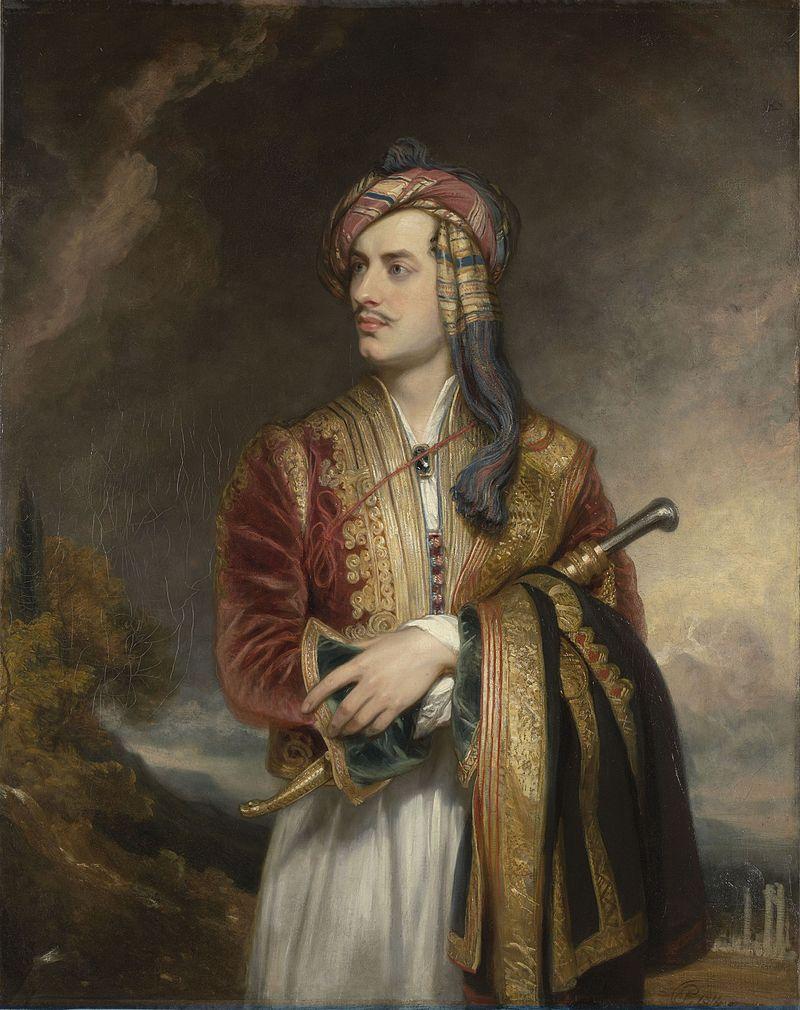Created by Talyn Torres on Wed, 03/03/2021 - 22:06
Description:
In his day, Lord Byron was viewed as a terribly controversial figure, and even by today’s standards his conduct would be considered quite unusual. In fact, it seems likely that he would now be viewed as a criminal, due to the fact that he was “enthralled by a young Greek boy of 15” when he, himself was 36 years-old (Drummond), but the Romantic Period had other qualms concerning him, as well. Of course, his bisexuality caused him to be viewed as a sexual deviant, and his club foot caused him to be viewed as a deformed sexual deviant, at that (Drummond), and yet, the people of England could not take their eyes off of him. Heinzelman writes that “at the time of his death” he was “the most famous writer in Europe” (493), thereby demonstrating the sheer magnitude of his appeal. It was after the publication of his poem, Childe Harold’s Pilgrimage in 1812 that he first became “a celebrity in fashionable circles” (Drummond), and his success only increased after this. With this, Heinzelman views Byron’s well-known epic poem, Don Juan as a “way of addressing…the celebrity-predicament” he faced throughout his life (498), and, in fact, many of his works are thought to be partially autobiographical.
Though wealthy, his life was not always an easy one. His parents separated when he was very young and his father died shortly thereafter (Moore 2), leaving him with a deep, unresolved “attachment” (Jackson 25) to a parent he had hardly known. He also suffered from anorexia, which Jackson attributes to the fact that “a man who comes into the world with what he sees as a physical flaw…may seek to mould and control his body in other ways to make up for it” and to the fact that he was overweight in his youth (25). Perhaps these issues with his past and body are the reason why “Byron was notoriously protective of his image and directed his publisher John Murray to destroy any engravings of himself that he disliked” (Drummond).
This portrait was painted in 1814 by Thomas Phillips (Scarce 160). Byron is depicted in traditional Albian dress, because he traveled through the Ottoman territories and spent 2 years (1808-1810) at the court of Ali Pasha, who was the “governor of the Ottoman province of Roumelia” between 1788 and 1822 (Scarce 159). Byron believed that Albanian clothing was “the most magnificent in the world” (qtd. in Drummond), and the above image is thought to “[allude] to his travels and adventurous spirit while presenting the face of a calm and pensive Byron” (Drummond).

Works Cited
Drummond, Clara. "Lord Byron, 19th-Century Bad Boy." British Library, 15 May 2014, https://www.bl.uk/romantics-and-victorians/articles/lord-byron-19thcentu.... Accessed 1 March 2021.
Heinzelman, Kurt. “Lord Byron and the Invention of Celebrity.” Southwest Review, vol. 93, no. 4, Sept. 2008, pp. 489–501. EBSCOhost, search.ebscohost.com/login.aspx?direct=true&db=prf&AN=35548921&site=eds-live.
Jackson, Emily A.Bernhard. “Dangerous to Gnaw: Lord Byron’s Eating Disorder.” Times Literary Supplement, no. 6095, Jan. 2020, p. 25. EBSCOhost, search.ebscohost.com/login.aspx?direct=true&db=edsbro&AN=edsbro.A632137045&site=eds-live.
Scarce, Jennifer M. “Lord Byron (1788–1824) in Albanian Dress: A Sartorial Response to the Ottoman Empire.” Ars Orientalis, vol. 47, 2017, pp. 158–77. https://doi.org/10.3998/ars.13441566.0047.007
Copyright:
Associated Place(s)
Part of Group:
Featured in Exhibit:
Artist:
- Thomas Phillips


